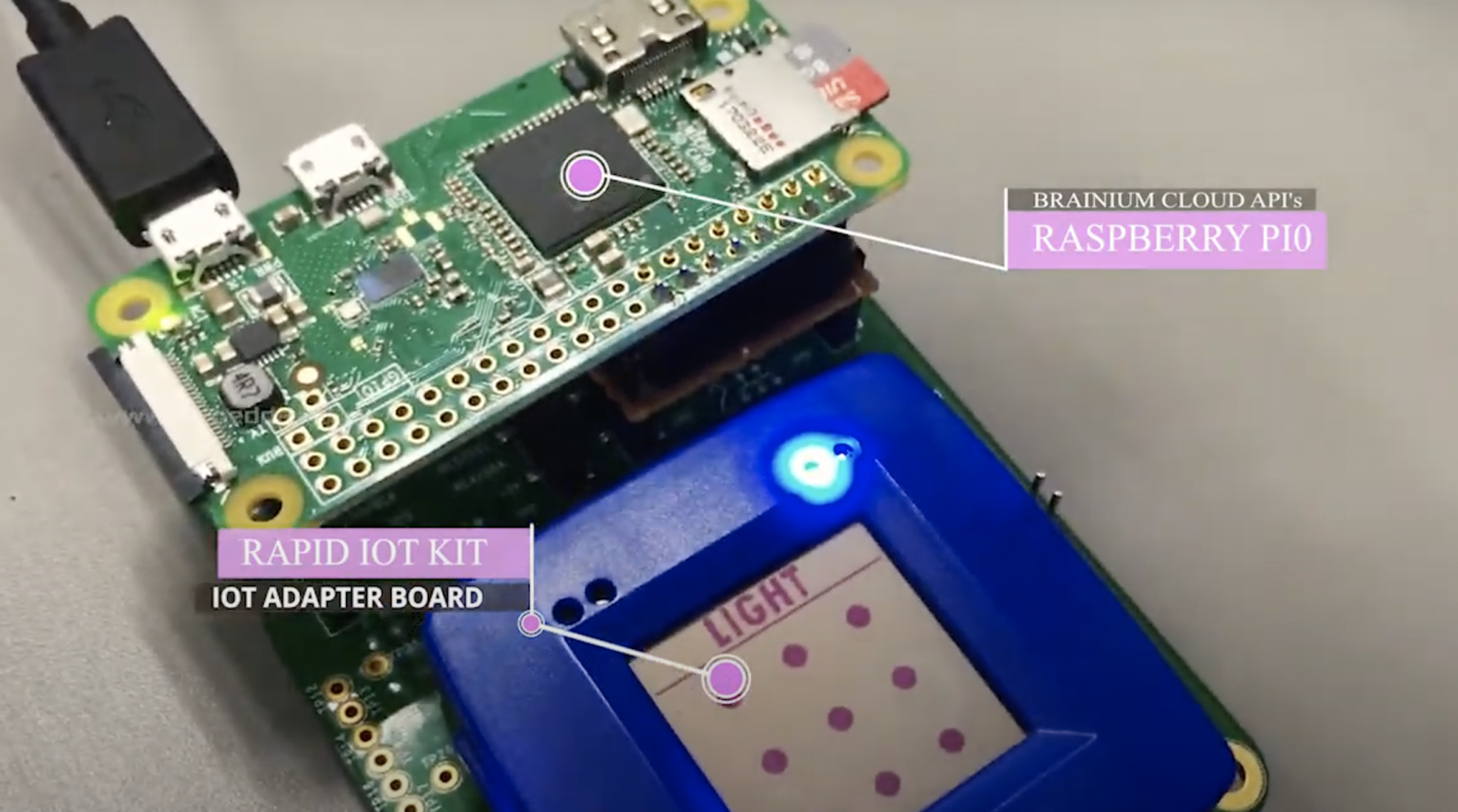Unlock Secure IoT: Raspberry Pi & RemoteIoT VPC Guide
Detail Author:
- Name : Tressie Keeling
- Username : cleora.hane
- Email : fmante@krajcik.com
- Birthdate : 2007-03-07
- Address : 6975 Christine Village Suite 366 Wayneport, ME 20289-0376
- Phone : (848) 378-5540
- Company : Becker, Bauch and Paucek
- Job : Police Identification OR Records Officer
- Bio : Consequuntur eligendi earum est enim ratione. Nulla ullam deserunt ut. Eum quo consequatur et soluta nihil deleniti officiis.
Socials
tiktok:
- url : https://tiktok.com/@bmaggio
- username : bmaggio
- bio : Quis repudiandae id ut et doloribus aut. Commodi ea aliquid laudantium.
- followers : 801
- following : 1946
instagram:
- url : https://instagram.com/maggiob
- username : maggiob
- bio : Sed et vel sit. Saepe accusantium iste ut saepe omnis vitae non. Pariatur facere deserunt adipisci.
- followers : 2606
- following : 957
twitter:
- url : https://twitter.com/brady_id
- username : brady_id
- bio : Excepturi similique libero est ad animi et beatae. Rerum nihil accusantium sit.
- followers : 5925
- following : 466
linkedin:
- url : https://linkedin.com/in/brady_id
- username : brady_id
- bio : Magnam eius aut laborum sequi ipsam.
- followers : 6062
- following : 827
Ever wondered if you could access your Raspberry Pi from anywhere in the world as securely as if it were plugged directly into your home network? You absolutely can! By leveraging the power of RemoteIOT VPC, you unlock a world of possibilities for remote access and management of your IoT devices, offering unparalleled security and flexibility.
The ability to securely connect a Raspberry Pi to a Virtual Private Cloud (VPC) opens up tremendous potential for IoT applications. This connection creates a secure tunnel, ensuring that data transmitted between the Raspberry Pi and the cloud is protected from prying eyes. The process involves setting up a secure operating system and network configuration on the Raspberry Pi, establishing a reliable connection to the VPC, and implementing robust security measures to prevent unauthorized access. By mastering these techniques, you can confidently deploy your Raspberry Pi in remote locations, knowing that your data is safe and your devices are under your control.
| Category | Information |
|---|---|
| Concept | RemoteIOT VPC and Raspberry Pi Integration |
| Benefits | Secure remote access, data protection, centralized management, scalability |
| Key Technologies | Virtual Private Cloud (VPC), Raspberry Pi, RemoteIOT P2P |
| Security Measures | Encryption, Firewall Configuration, Access Control |
| Use Cases | Remote monitoring, industrial automation, smart homes |
| Reference Website | Raspberry Pi Foundation |
One of the most significant advantages of using RemoteIOT VPC is the ability to create logical groupings of your devices. This allows you to manage them more efficiently, applying specific security policies or software updates to different groups based on their function or location. Furthermore, you can harden your public interface, minimizing the risk of external attacks and ensuring that only authorized users can access your devices. This granular control over your network is essential for maintaining a secure and reliable IoT infrastructure.
This comprehensive guide will provide you with the knowledge and tools necessary to set up and manage your own remote IoT VPC network using a Raspberry Pi, completely free of charge. We'll walk you through the essential steps, introduce you to the most effective tools, and share best practices that will help you build a robust and secure IoT solution. Whether you're a seasoned developer or just starting out with IoT, this guide will empower you to harness the full potential of the Raspberry Pi and the cloud.
The Raspberry Pi, with its compact size, affordability, and versatility, has revolutionized the world of computing. It's become the go-to platform for a wide range of applications, from home automation and media centers to industrial control and scientific research. However, one of the key challenges faced by Raspberry Pi users is establishing secure and reliable connections to remote networks, particularly when dealing with sensitive data or critical infrastructure.
This is where the concept of a Virtual Private Cloud (VPC) comes into play. A VPC provides a private and isolated network environment within the public cloud, allowing you to securely connect your Raspberry Pi devices to the cloud and to each other. By creating a VPC, you can control access to your devices, encrypt data in transit, and implement other security measures to protect your IoT infrastructure from threats.
One of the most powerful tools for connecting your Raspberry Pi to a VPC is RemoteIOT P2P. This technology enables direct, peer-to-peer connections between devices, bypassing the need for a central server and reducing latency. RemoteIOT P2P also provides end-to-end encryption, ensuring that your data remains secure throughout the entire communication path. By leveraging RemoteIOT P2P, you can create a highly secure and responsive IoT network that meets the demands of even the most critical applications.
Setting up a secure remote IoT VPC network with a Raspberry Pi on AWS (Amazon Web Services) opens up a world of new possibilities for managing and controlling devices remotely. AWS offers a comprehensive suite of cloud services, including VPC, that make it easy to create a secure and scalable IoT infrastructure. This guide will walk you through the process of creating a secure, isolated network environment using AWS's Virtual Private Cloud (VPC) technology, step by step.
To begin, you'll need to set up a Raspberry Pi with a secure operating system and network configuration. This involves choosing a lightweight Linux distribution, such as Raspbian, and configuring a strong password. You'll also need to enable SSH (Secure Shell) for remote access and configure a firewall to block unauthorized connections. Once your Raspberry Pi is securely configured, you can proceed to create a VPC in AWS.
Creating a VPC involves defining the network's IP address range, creating subnets for different device groups, and configuring route tables to control network traffic. You'll also need to create security groups to define the rules for inbound and outbound traffic to your Raspberry Pi devices. By carefully configuring these network settings, you can create a secure and isolated environment for your IoT devices.
Once your VPC is set up, you can connect your Raspberry Pi to the VPC using a VPN (Virtual Private Network) connection or a direct connection using AWS Direct Connect. A VPN connection provides a secure and encrypted tunnel between your Raspberry Pi and the VPC, while AWS Direct Connect provides a dedicated network connection for higher bandwidth and lower latency. Choose the connection method that best suits your needs and budget.
After establishing a connection to the VPC, you can configure your Raspberry Pi to communicate with other devices in the VPC using private IP addresses. This allows you to create a secure and isolated network for your IoT devices, preventing them from being exposed to the public internet. You can also use AWS services like AWS IoT Core to manage and monitor your devices remotely.
Connecting your Raspberry Pi to the VPC is the final step in the Raspberry Pi VPC IoT tutorial. Once you've successfully established a connection, you can begin developing and deploying your IoT applications. You can use the Raspberry Pi to collect data from sensors, control actuators, and perform other tasks, while leveraging the power and scalability of the AWS cloud.
By leveraging the power of VPC and SSH, you can create a robust and secure infrastructure for your Raspberry Pi devices. SSH provides a secure channel for remote access and management, allowing you to configure and control your devices from anywhere in the world. VPC provides a private and isolated network environment, protecting your devices from external threats.
In summary, the best remote IoT VPC network on a Raspberry Pi is about building secure, scalable, and efficient systems that can connect devices globally. This involves choosing the right tools and technologies, implementing robust security measures, and carefully configuring your network settings. By following best practices and staying up-to-date with the latest security threats, you can create an IoT infrastructure that is both powerful and secure.
Connection through the VPC network is significantly more stable, faster, and reliable for everyday use. Unlike relying on public internet connections, a VPC provides a dedicated network path, minimizing latency and ensuring consistent performance. This is particularly important for applications that require real-time data processing or remote control.
This article will guide you through the process of securely connecting remote IoT devices using P2P Raspberry Pi on Windows, covering everything from setup to troubleshooting. We'll explore the tools, techniques, and best practices required to achieve a secure connection, ensuring that your data is protected and your devices are under your control.
As we delve deeper into this topic, we’ll explore the tools, techniques, and best practices required to achieve a secure connection. This includes configuring firewalls, setting up VPNs, and implementing strong authentication mechanisms. By mastering these techniques, you can create a secure and reliable IoT infrastructure that meets the needs of your organization.
The implementation of Raspberry Pi VPC encompasses the creation of a virtual private network interconnecting multiple Raspberry Pi devices within a secure environment. This arrangement ensures that data transmission is shielded from external threats, providing a reliable and secure conduit for IoT applications.
Remotely access Raspberry Pi behind a firewall or NAT router. RemoteIOT VPC allows you to directly connect to your Raspberry Pi behind a firewall from anywhere, as if it were on the local network. This eliminates the need to discover the IoT device IP address or change any firewall settings, simplifying the remote access process.
Send commands and batch jobs to your Raspberry Pi from a web portal. RemoteIOT VPC provides a user-friendly web interface that allows you to send commands, upload files, and manage your Raspberry Pi devices remotely. This makes it easy to automate tasks, deploy software updates, and monitor the health of your devices.
If you're looking to securely connect your Raspberry Pi with a VPC network and enable remote IoT P2P communication, you're in the right place. This guide will provide you with the knowledge and tools necessary to build a secure and reliable IoT infrastructure.
Securely connecting a Raspberry Pi with the VPC network and remote IoT P2P is a crucial step for anyone looking to leverage the full potential of IoT. By following best practices and utilizing the right tools, you can ensure that your connections are not only efficient but also secure.
Users can connect to Raspberry Pi remotely not only with the use of VNC software but also through applications that leverage RemoteIOT VPC. This provides greater flexibility and control over your remote connections, allowing you to choose the connection method that best suits your needs.
Users can ensure a remote connection to Raspberry Pi from their Windows machines through P2P connections facilitated by RemoteIOT VPC. This provides a secure and reliable connection, bypassing the need for port forwarding or complex network configurations.
Connection through P2P is more secure and faster than using data transfer through web services. P2P connections establish a direct link between devices, reducing latency and eliminating the need for intermediaries that could potentially compromise security.
This guide is designed to help you navigate the complex world of networking, focusing on securely connecting your Raspberry Pi to a VPC network and leveraging RemoteIOT P2P. We'll provide you with the knowledge and tools you need to build a secure and reliable IoT infrastructure.
This is especially important when users are connecting to a remote Raspberry Pi regularly, so using the RemoteIOT VPC network will be more convincing due to its stability, security, and ease of use.
By following best practices and utilizing the right tools, users can ensure their connections are not only efficient but also secure, allowing them to leverage the full potential of IoT.


